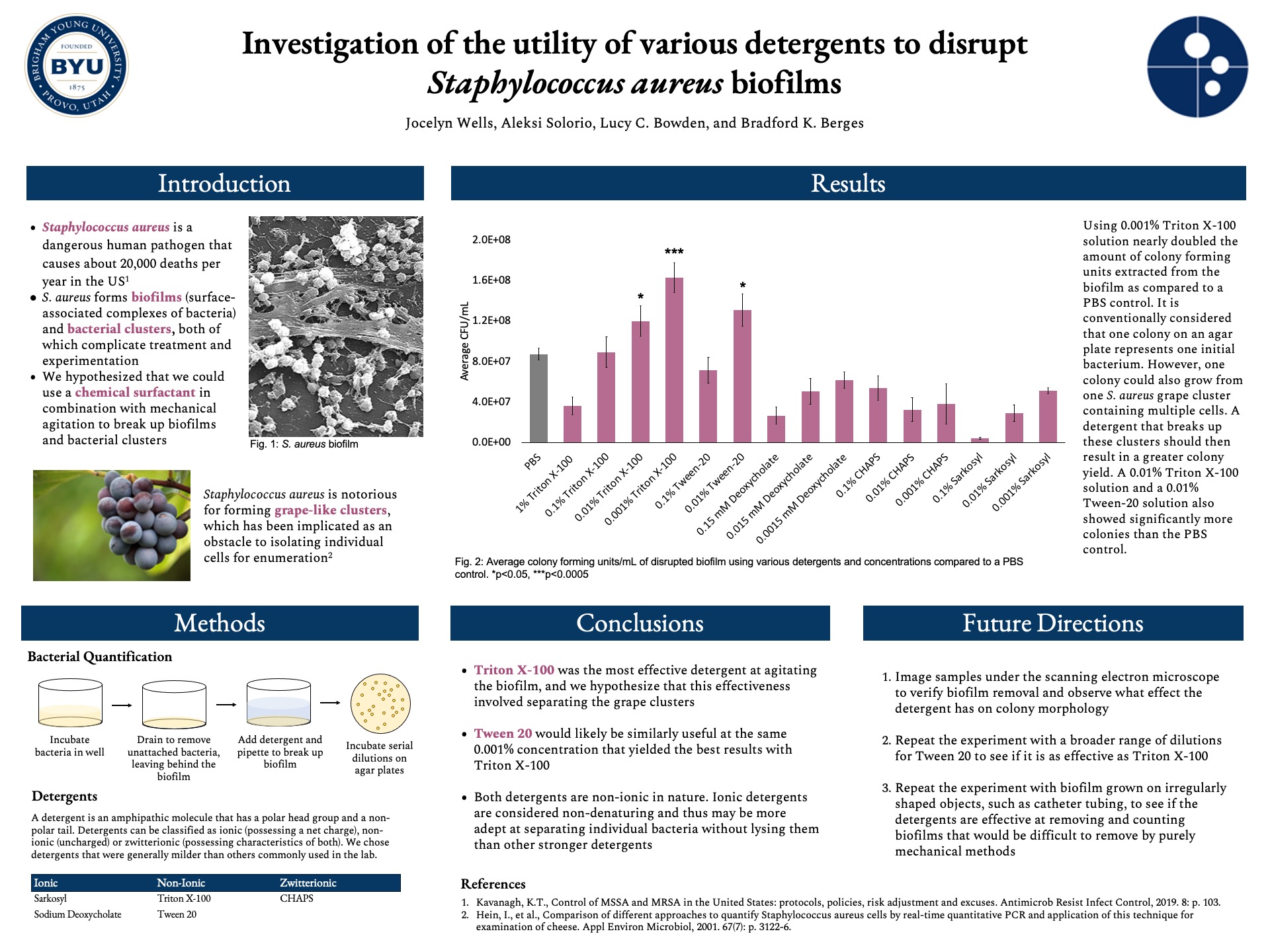Presenter Name: Jocelyn Wells
Description
Staphylococcus aureus is a dangerous human pathogen that causes about 20,000 deaths per year in the US as well as costing the US healthcare system billions of dollars annually. One of the reasons that S. aureus is so deadly is that it forms biofilms. Bacterial biofilms are surface associated assemblages of bacteria embedded in an extracellular matrix. Biofilms are extremely difficult to treat because neither the host immune response nor antibiotics can easily penetrate the matrix. In addition, S. aureus cells adhere tightly to one another, forming dense "grape clusters" of cells that are difficult to separate. Both of these factors, in addition to complicating treatment, make it difficult to study the bacterium, since many methods require isolating individual cells. One way of breaking up biofilms and bacterial clusters is to use a chemical surfactant in combination with mechanical agitation.
We tested 5 different detergents (Triton X-100, Tween 20, Sodium deoxycholate, CHAPS, and N-lauroylsarcosine (Sarkosyl)) at various concentrations. Each detergent was deposited into a well containing a S. aureus biofilm and vigorously pipetted up and down. The resulting mixture was then streaked on agar plates in serial dilutions and colony forming units (CFU) were counted. Ideally, a detergent with a higher CFU count than the bacterial media control would indicate that a detergent successfully separated bacterial cells that would have otherwise remained bound and formed the same colony.
Our results showed that a 0.01% solution of Triton X-100 was the only detergent tested to show more CFU than the control. Most of the other detergents produced less CFU, indicating that they were too strong of a concentration and were killing the cells. Future work will be done to determine whether 0.01% Triton X-100 shows statistically significantly more CFU than the bacterial media control.
University / Institution: Brigham Young University
Type: Poster
Format: In Person
Presentation #B61
SESSION B (10:45AM-12:15PM)
Area of Research: Science & Technology
Email: jocie.ww@gmail.com
Faculty Mentor: Brad Berges

